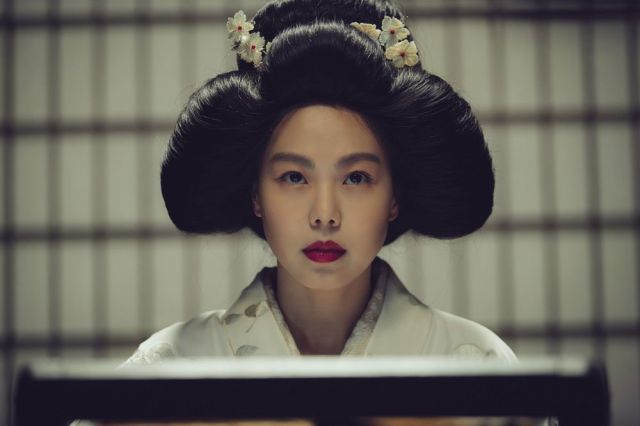
South Korean cinema has been on the rise for a couple of decades now, with its impact having already become a global phenomenon, both in terms of quality and commercial success. This prowess has been highlighted in the last decade, where their number of great films is greater than ever. In that fashion, winnowing 25 among them was a very difficult task, for a list that could easily include 50 or even 100 movies.
Furthermore, putting the selected films in an order from “worst” to best was an even more difficult endeavor, since all of the entries in the list are great. On a final note, as it will become obvious from the list, I consider 2016 one of the greatest years of South Korean cinema.
Without further ado, and with a focus on diversity and the presentation of as many filmmakers as possible, here are the 25 best South Korean films of the 2010s.
25. The Admiral (Kim Han-min, 2014)

Films about the Joseon era have been among the most popular in South Korea for years now, particularly through their combination of blockbuster production values and historic setting. This tendency found its apogee in “The Admiral”, a 2014 film based on the historical Battle of Myeongnyang, which recorded 10 million viewers in 12 days, setting a record for achieving 10 million viewers in the shortest amount of time, and in the process becoming the highest grossing film of all time in South Korea, a place it still holds.
The story begins with the events leading to the naval battle, which actually became the duel between two men: Joseon admiral Yi Sun-sin and Kurushima Michifusa, whom Hideyoshi Toyotomi sent to Joseon to take over the Navy. In the beginning of the film, both men have a number of issues to deal with. Yi Sun-sin has been just released from prison after the disaster at Chilcheollyang, which left the Joseon naval force with just 12 ships, and a half-built turtle, the most feared among the Joseon vessels.
Furthermore, he has to face his higher-ups, who consider the battle at sea a lost one, and want to focus on the battles in the mainland. Eventually, the legendary admiral manages to amass around him the crew for the 12 ships and to reach the Myeongnyang Strait, an area notorious for its strong and treacherous currents, which the Japanese intended to cross on their way to the capital. Kurushima, on the other hand, who is known as the “Pirate King” among the Japanese army, has to face the other admiral’s distrust and lack of sympathy. However, with a fleet that exceeds the Joseon one in a 10 to 1 ratio, he also arrives at the straits and the battle begins.
Kim Han-min had a preview’s experience in Joseon films through his 2011 production, “War of the Arrows”, and he implemented all of his acquired knowledge to “The Admiral”, a production of truly epic proportions. In that fashion, the work done with the production values of the movie is truly impressive. Starting with the costumes, which portray the era as accurately as possible in both opposing parties, and continuing to the ships, weapons and the general depiction of the era, the art direction of Jang Chun-seop is a thing of wonder.
Kim repeatedly highlights his ability to direct a number of actors simultaneously on screen, with the help of Kim Chang-ju’s editing, which retains a rather fast rhythm throughout the film’s duration, and Kim Tae-song’s cinematography, which presents a number of outstanding images. Kim is also responsible for the epic score of the movie that fits the general aesthetics of the production perfectly. The SFX department has also done an impervious job, particularly in the movement of the different vessels. Lastly, the work done in the sound department, headed by Choi Tae-young, is also impressive, with the sounds of bullets and arrows, and some moments of meaningful, complete silence highlighting this prowess.
24. New World (Park Hoon-jung, 2013)
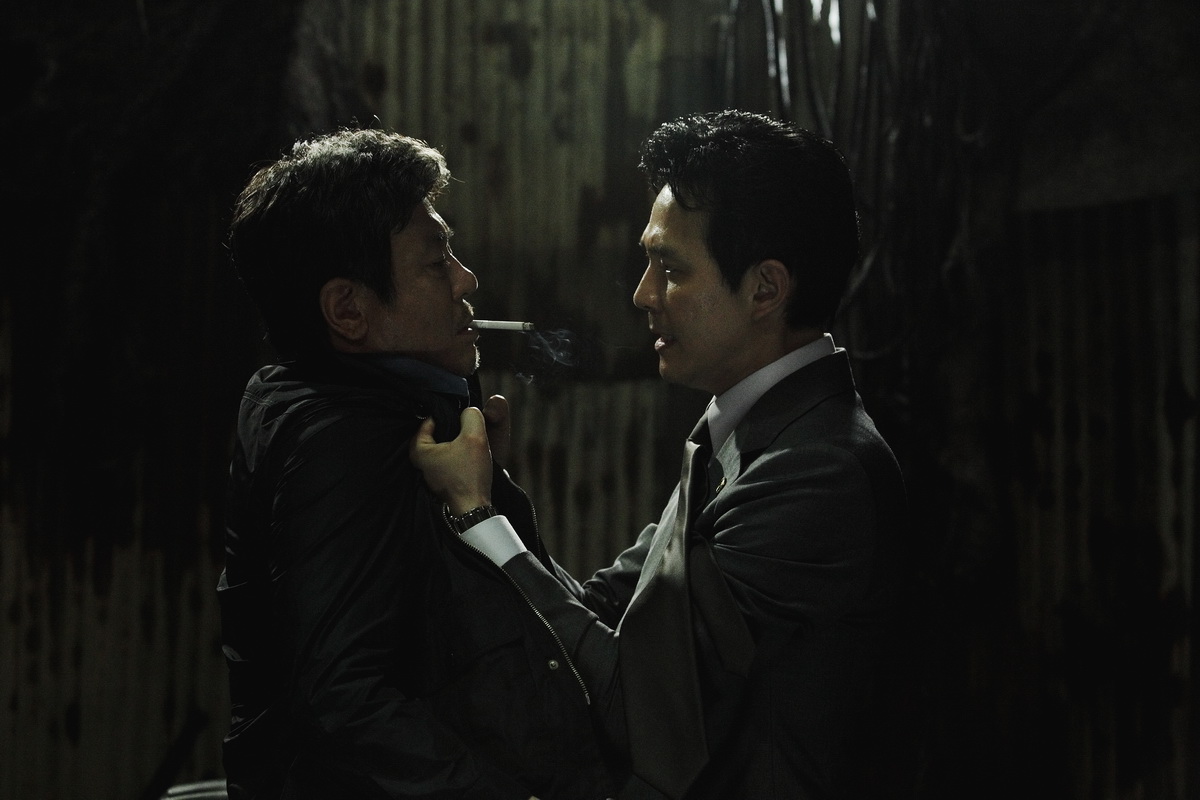
Ja-sung is an undercover police officer who has ascended the ranks of the crime syndicate to which he was assigned, to the point of becoming the right hand of the number 2 in the hierarchy, named Jung Chung. However, when the number 1 is killed, the syndicate engulfs in a power struggle for the top position, between Jung Chung and Joon-gu, which eventually escalates into war. Ja-sung, who was to retire soon, must now keep acting in his role, since his operator named Kang Hyung-chul is set on influencing the leader’s selection, putting a puppet of his at the top of the syndicate. This fact brings tension between the two.
Park Hoon-jung directs an agonizing crime thriller, which contains the usual violence, anti-heroes, impressive action sequences, and stylish gangsters in their suits, along with the much-loved plot twists. However, the film’s main point of excellence is its characters, with the thin balance that dominates their relationships constantly shifting, in a game of death where nothing is improbable, as it is most eloquently stressed in the film’s finale.
Another point of excellence is the acting, with each of the main protagonists performing their respective roles magnificently. In that fashion, Lee Jung-jae plays the perpetually anxious Ja-sung, who has to maintain his cool composure when he is in the company of Jung Chung, acted with brio and overall artfulness by Hwang Jung-min, in both his calm moments and his outbursts. Choi Min-sik is great as always, in the role of a cop that is not so much different from the people he is after.
Technically the film is magnificent, particularly in the action scenes, which mostly occur in large spaces like warehouses, airports, and construction sites, where the elaborateness of Chung Chung-hoon’s cinematography and Cho Hwa-sung’s set design becomes more obvious.
23. Villainess (Jeong Byung-gil, 2017)
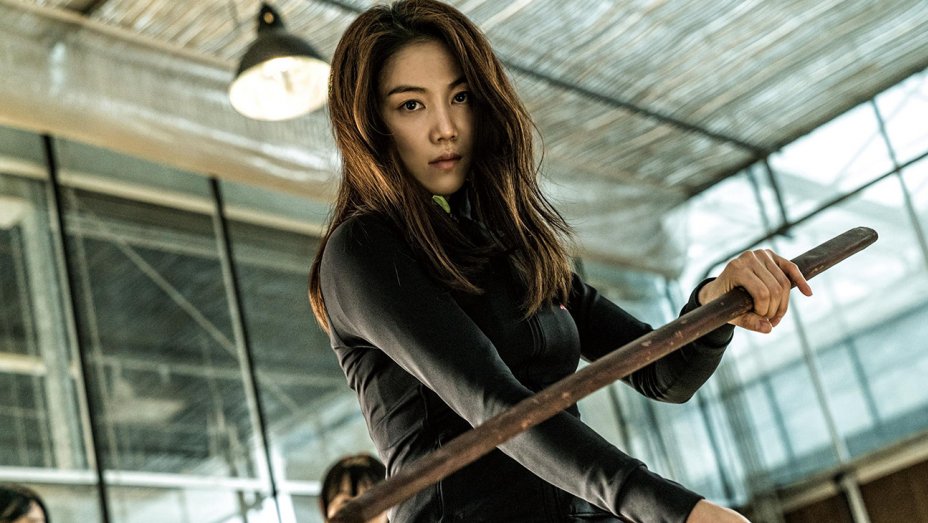
The movie starts with an extremely impressive action scene, where we watch an unknown assailant attacking swarms of enemies in a building, butchering, maiming, breaking, kicking and punching everyone who enters the scene, in a style identical to the first-person shooters in video games. After awhile, the camera is pushed back and the character is revealed to be a woman, while the video game aesthetics remain, as a third-person action this time.
After the ending of this scene, and a disorienting cut including a flashback, we watch the main heroine escaping a room where she was secluded, and some seemingly surrealist scenes occur, where she has to pass through a room where women practice ballet, another where they act, and another where they put their makeup on. In this sequence, the film transforms into yet another video game, this time in the category of surviving horror.
A while later, we start to learn about the real story of Sook-hee, the wife of a criminal who trained her to be a killing machine and left her pregnant. Now the girl has to work for the government’s secret service as an assassin, for 10 years, in order to avoid them killing her and her daughter.
Up to this point, the action is frantic in the most elaborate way. Violence, martial arts, street fighting, guns and knives, and an exceptional combination of Park Jung-hun’s cinematography, Heo Sung-mee’s editing, and Koo Ja-wan’s sound make for one of the best action sequences ever to appear in cinema. This greatness continues to the rest of the action scenes in the movie, which include car, bus and motorcycle chases and fights, and scenes occurring in places that range from private clubs to the outside of the buildings.
All of these are presented through another great combination of films that seems to feature the aesthetics and tactics of “Chocolate” and “The Raid”, and the aesthetics of “A Bittersweet Life” and “I’m a Cyborg, But That’s OK” at the same time, with the latter deriving from the way Kim Ok-bin plays Sook-hee in the action scenes.
22. The Age of Shadows (Kim Jee-woon, 2016)
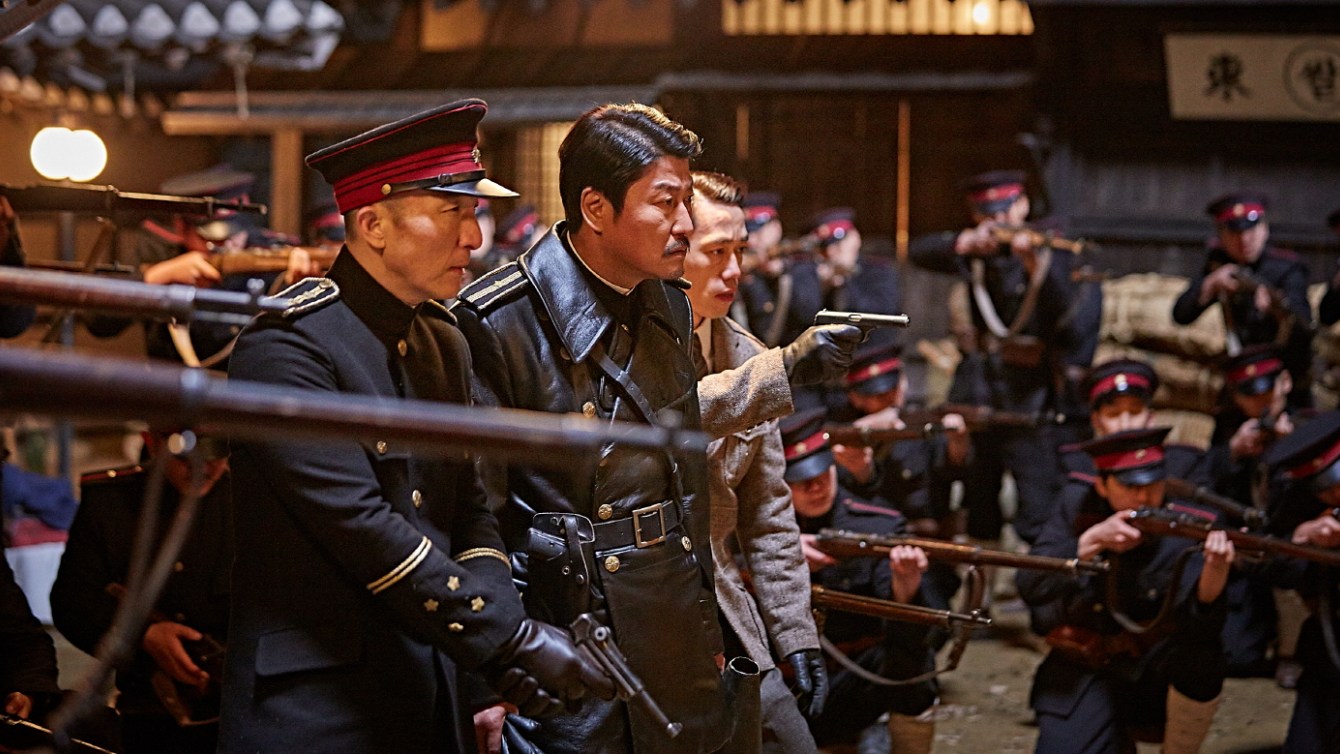
The film is set at the end of the 1920s in Korea, during the Japanese occupation. Lee Jung-chool is a Korean working for the Japanese police, whose mission is to uncover members of the Resistance, and particularly Kim Woo-jin, one of its central figures. Lee has some successes, but the Japanese do not fully trust him, and attach to him Hashimoto, supposedly as his assistant, but actually as the man in charge.
In this power struggle, both sides use their moles and their informants, and a series of events take place that lead Lee and Kim to meet, although neither of them reveal that they knows the other’s identity.
Soon, the scenery changes as all the players move to Shanghai, where the members of the Resistance have moved to avoid investigations and to obtain explosives. Kim soon tricks Lee into a meeting with the leader of the Resistance, Jung Chae-san, and now Lee has to choose sides, as he is blackmailed by the Koreans and suspected by the Japanese. A deadly cat-and-mouse game initiates.
Kim directs and pens a spy thriller that also combines elements of film noir with action and drama. There is also a minor romantic concept, but it’s not actually examined at all, since women are definitely in the background. The script is quite elaborate, with constant betrayals and changes in the upper echelons, as spies fight against other spies. These notions are chiefly materialized through the character of Lee Jung-chool, who incorporates all of them.
In terms of direction, the film is a true masterpiece. Kim creates a great atmosphere that is shaped through a number of ‘confrontations’, usually between two characters, with the ones between Lee and Kim standing apart. The noir element is chiefly present in these scenes.
Song Kang-ho is great as always as Lee Jung-chool, in a very difficult role that demands a constant state of inner struggle. His chemistry with Kim, which has been shaped through three previous collaborations (“The Quiet Family”, “The Foul King”, “The Good, the Bad, the Weird”) is quite evident, and one of the biggest assets of the film.
21. Inside Men (Woo Min-ho, 2015)
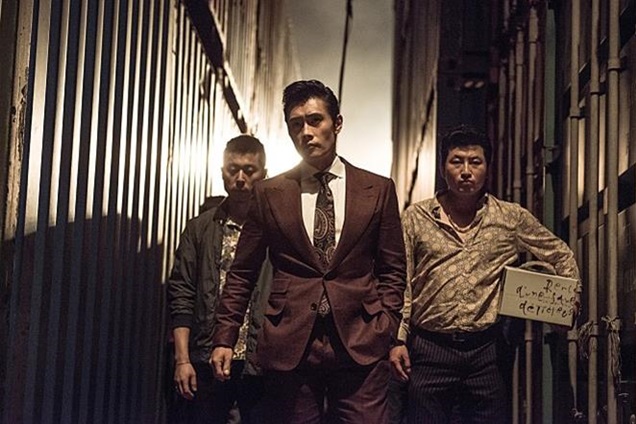
This film revolves around the intricate, corruption-filled relationships of five men. Lee Kang-hee is the chief editor at a large newspaper, who has helped an ex-prosecutor (Jang Pil-woo) rise to the parliament. The former currently provides the necessary publicity and the latter the political power. The financing comes from President Oh, the owner of a large company which provides for both Jang and the newspaper. An Sang-goo is a gangster that gets into business with Lee as his enforcer, at least until he is deemed a traitor.
Lastly, Woo Jang-hoon, one of the few honest prosecutors, has set his life goal to putting Jang behind bars. Unfortunately, he has no connections to help him and has to face the combined forces of the press, the industry, and the politicians. However, he finds an unlikely ally in An Sang-goo, who is set to exact revenge.
Woo Min-ho makes a clear comment regarding corruption in the country, and the connection of the judiciary with the press and the politicians. He paints all the individuals of the aforementioned institutions with the darkest colours, to the point that even a mob man like An Sang-goo looks honest and good in comparison. This depiction stretches beyond their corruption, as they are also presented as sexual deviants.
The film keeps a good pace, and despite its long duration, it manages to retain an unwavering interest. The story unfolds in segments, and between them flashbacks are inserted that further explain the situation. In that aspect, and as the script is quite complex, the movie demands full attention from the spectator, a task than can be difficult considering its duration. However, both the outcome and the unfolding of the story compensate fully.
20. Train To Busan (Yeon Sang-ho, 2016)
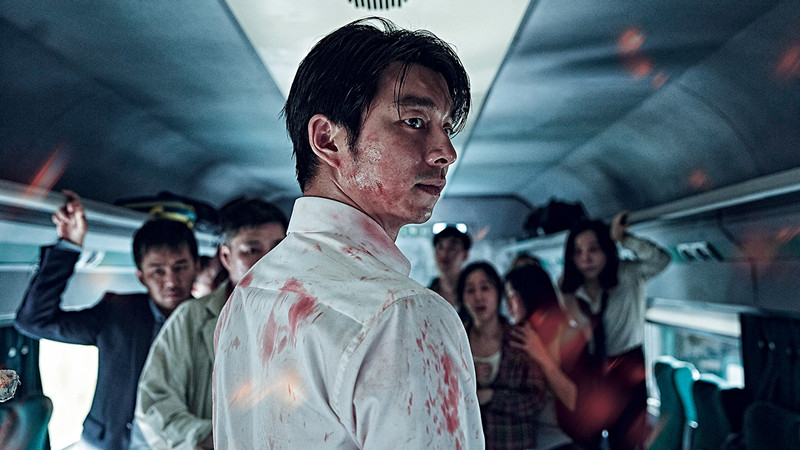
Seok-woo is a fund manager in Seoul, who has separated from his wife and now lives with his young daughter, Su-an. Obsessed with money and his work, Seok-woo has been neglecting his family for years. However, he finally succumbs to his daughter’s wish to bring her to her mother, in Busan, for her birthday. The next morning, they take the KTX train from Seoul station to Busan, but shortly before the train leaves, a zombified woman manages to get on the train, and soon spreads the virus to the whole of the train.
Now, Seok-woo and Su-an have to survive in the infested train, while they are soon joined by Sang-hwa and his pregnant wife, Sung-kyung, and a baseball player named Yong-guk, who is looking for his girlfriend, Jin-hee. At the same time, Yong-suk, another businessman, and a bunch of other passengers have secluded themselves in the wagon, and are unwilling to let anyone else in.
Yeon Sang-ho directs a film that definitely moves toward being a blockbuster, but manages to induce it with a number of elements that make it much more meaningful than the majority of zombie and action films. The elaborate script, which retains the agony as it switches genres from action to drama, is a definite factor, as is the case with the injections of humor, which occasionally occur through chaos. The meaningful allegories regarding socio-political issues also move in that direction.
However, despite all this depth, “Train to Busan” is first and foremost a very impressive action film. Starting with the zombies, which follow the rules of Danny Boyle’s “28 Days Later” and are actually very quick, add to the claustrophobic environment of the train, and the result is one of the most agonizing depictions we’ve ever seen of the creatures.
Furthermore, the scenes where they crash into each other as they are speeding toward their prey are utterly horrific, although the one that truly stands apart occurs when they form a mass of sorts in order to stop a moving train.
The acting element in zombie movies is usually on a very low level, since the genre tends to focus on the action and the creatures rather than the actual actors. However, Yeon used a different tactic, since the film also features much drama and the occasional comedy, which demands good acting, at least to some degree.
19. Sea Fog (Shim Sung-bo, 2014)
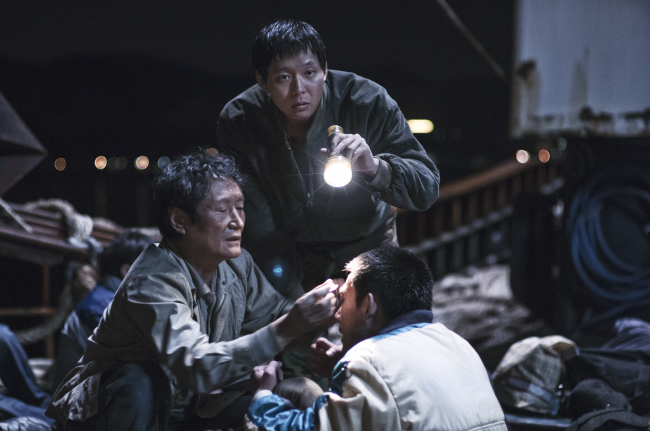
The film is based on an actual incident, when 25 illegal Chinese immigrants died from asphyxiation in the ship’s hold, as it was transporting them to South Korea, with the crew then throwing the bodies into the sea. The incident almost caused a diplomatic episode between South Korea and China, with the former publicly apologizing for the incident. The circumstances surrounding the incident shocked the South Korean public, and the government issued a statement expressing regret over what it called an inhumane and criminal act.
The story takes place in 1998, three years before the case, when Captain Kang, hit by the financial crisis brought by the IMF, is forced to transport Chinese immigrants to South Korea. The trip ends up being “with no return” for Kang and his crew, whose hypocritical kindness toward their passengers vanishes as soon as things start to go the wrong way.
As a thick fog starts covering the ship, violent incidents start occurring and a bizarre mania seems to take over the sailors – the bald boatswain, Ho-young; the technician, Kyung-koo; the chief mechanic, Wan-ho; and his sex-driven assistant, Chang-wook. The only one who seems to retain a shred of humanity is Dong-shik, whose love for a passenger named Hong-mae makes him turn against the rest of the crew.
Shim Sung-bo wrote (along with Bong Joon-ho) and directed his debut film, creating a horrific spectacle, particularly due to its raw realism.
This component begins with the depiction of the everyday life of those working on the boat, a team of poor misers who have to live in it, living an equally dissatisfying life, both at sea, where they have to work all day, and on land, with most of them staying inside due to a lack of money or dealing with prostitutes.
Furthermore, the depiction of the general poorness of the era is evident, both in the environment the film takes place in, and in the dialogues, where the great amounts of money they used to earn in previous years is frequently mentioned. In that aspect, the captain’s decision to turn to illegality and the crew’s acquiescence are justified to a large degree by Shim, in contrast to the authorities’ corruption and the final outcome.
18. The King of Pigs (Yeon Sang-ho, 2011)
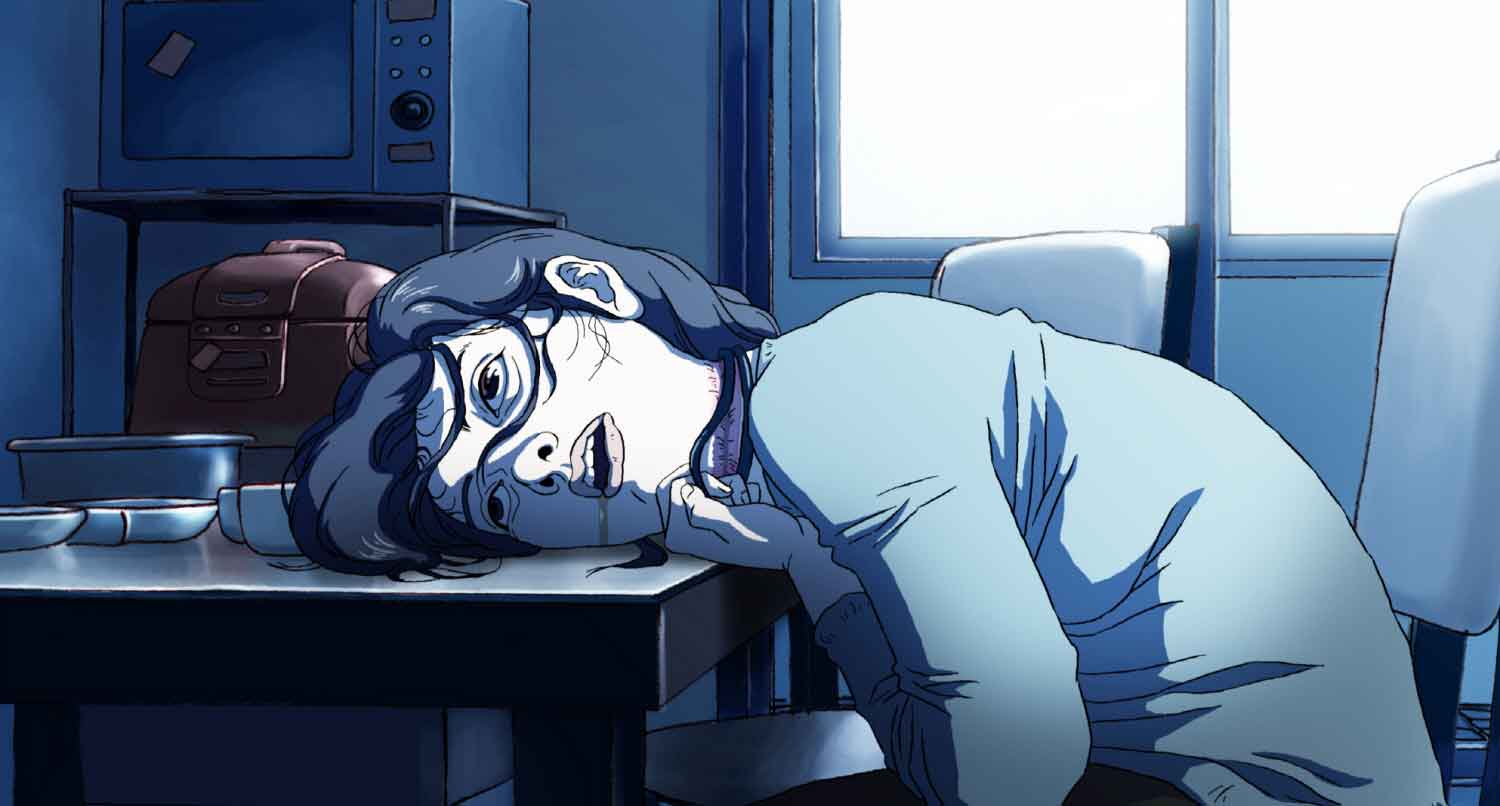
The story revolves around two former classmates, businessman Kyung-min and writer Jong-suk. In the present, both of their lives are in shambles. Jong-suk is forced to do menial work, such as ghostwriting, and has to face a rather obnoxious boss who keeps demeaning him. His frustration erupts violently toward his wife, who, despite his behaviour, seems to love him very much.
Jong-suk is in an even worse position since his business has gone bankrupt, and he has just killed his wife. After the murder, he calls Jong-suk, who he had not seen in 15 years, and the two of them go for a drink and start reminiscing about the past. Through flashbacks, the movie reveals the situations they faced in school, in a story of bullying, drama and constant violence that also involves a third member, Kim Chul, the “King of Pigs.”
Yeon Sang-ho (who is responsible for the direction, script, editing, character design and key animation, among others) uses the school environment to make a very harsh remark about a number of aspects of Korean society. The racism in school, where all students are classified according to the wealth of their families, who even give money to the school for their children to receive special treatment, is a main point of focus, as it highlights the concept of class warfare.
The privileged are known as “dogs”, while the ones at the bottom, as the three protagonists, are known as “pigs”. The subsequent bullying that ensues from top to bottom is another key element of the film, as is the social injustice involved, with the teachers pretending to not realize what is going on, and always turning on the “pigs”.
Kim Chul functions as a ray of hope in this hellish setting in which Kyung-min and Jong-suk live, but this is not a light film with a happy-ending, and Kim Chul’s way to face the bullies is to become worse than them, by being even more violent than they are. The disgrace and constant bullying even makes the two others to begin acting accordingly, although their true nature eventually takes over.
Lastly, a minor comment regarding consumerism is presented through Jong-suk’s sister, who functions as the epitome of the fashion victim.